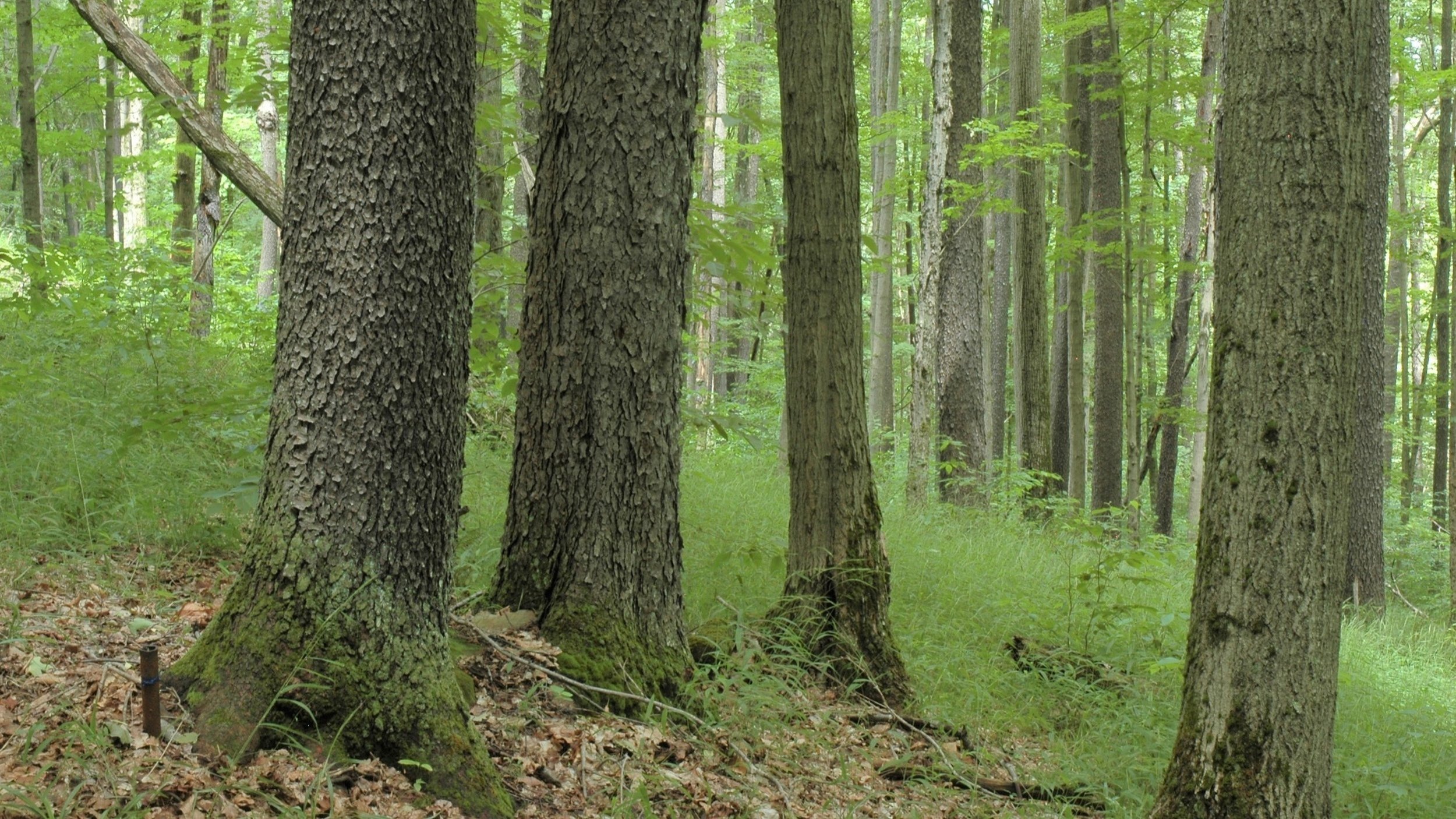
Research: Climate Adaptive Forestry
Planting tomorrow’s forests, today
As climate change accelerates, forests face a stark choice: migrate, adapt, or vanish. These shifts jeopardize ecosystem functions and the vital services forests provide. In response, I co-founded the international DREAM (Desired Regeneration through Assisted Migration) network and serve as co-PI of the Ohio Hills replicate of the Adaptive Silviculture for Climate Change experiment (ASCC).
DREAM tests how harvesting, competition, and browsing shape the success of climate-adapted seedlings. In less than a decade, it has grown into a leading international collaboration of ~30 scientists advancing adaptive forestry at sites across the U.S. and Canada.
The ASCC Ohio Hills represents a new replicate in the national Adaptive Silviculture for Climate Change network, focused on mixed-oak forests in Ohio. We co-designed this experiment with land managers to evaluate four silvicultural strategies—control, resistance, resilience, and transition (assisted migration)—to determine their effectiveness in building climate-ready forests.
Aerial view of one block of the DREAM experiment at Lac des Amanites, Quebec.
Climate-adapted seedlings planted in the DREAM experiment at Great Divide, Wisconsin USA.
Representative publications
Royo, A.A., P. Raymond, C.C. Kern, B.T. Adams, D. Bronson, E. Champagne, D. Dumais, E. Gustafson, P.E. Marquardt, A.M. McGraw, J.R. Miesel, A.D. Munson, C. Périé, F.J. Tavares-Moreira, A. Ola, A., M. Bouchard and J.F. Bissonnette. 2023. Desired REgeneration through Assisted Migration (DREAM): implementing a research framework for climate-adaptive silviculture. Forest Ecology and Management. 546: 121298. https://doi.org/10.1016/j.foreco.2023.121298.
Champagne, E., M. Bonin, A.A. Royo, J.P. Tremblay and P. Raymond. 2020. Predicting terpene content in dried conifer shoots using near infrared spectroscopy. Journal of Near Infrared Spectroscopy. 28: 308 – 314. https://doi.org/10.1364/JNIRS.28.000308.
Champagne, E., A.A. Royo, J.P. Tremblay, and P. Raymond. 2020. Phytochemicals involved in plant resistance to leporids and cervids: a systematic review. Journal of Chemical Ecology. 46(1): 84 – 98. https://doi.org/10.1007/s10886-019-01130-z.
Champagne, E., A.A. Royo, J.P. Tremblay and P. Raymond. 2021. Tree assisted migration in a browsed landscape: Can we predict susceptibility to herbivores? Forest Ecology and Management 498: 119576. https://doi.org/10.1016/j.foreco.2021.119576.
Refsland, T.K., B. Adams, D. Bronson, C.C. Kern, P. Marquardt, A.M. McGraw, A.A. Royo and J.R. Miesel. 2023. Trait-mediated effects of plant-soil feedbacks on the growth of eastern North American trees: implications for climate-adaptive forestry. Frontiers in Ecology and Evolution. Volume 11-2023. https://doi.org/10.3389/fevo.2023.1073724.
Champagne, E., P. Raymond, A.A. Royo, J.D.M. Speed, J.P. Tremblay, S.D. Côté. 2021. A review of ungulate impacts on the success of climate-adapted forest management strategies. Current Forestry Reports. 7: 305 – 320. https://doi.org/10.1007/s40725-021-00148-5.
Adams, B.T., Royo, A.A., Kern, C.C., Bronson, D.R., Matthews, S.N., Gougherty, A.V., Prasad, A.M., Iverson, L.R., Rehm, E.M., Raymond, P., Perie, C., Miesel, J.R., McGraw, A.M. 2024. Identifying climatically-compatible seedlots for the eastern U.S.: building the predictive tools and knowledge o enable forest assisted migration. Frontiers in Forests and Global Change. Volume 7-2024. https://doi.org/10.3389/ffgc.2024.1449340.


